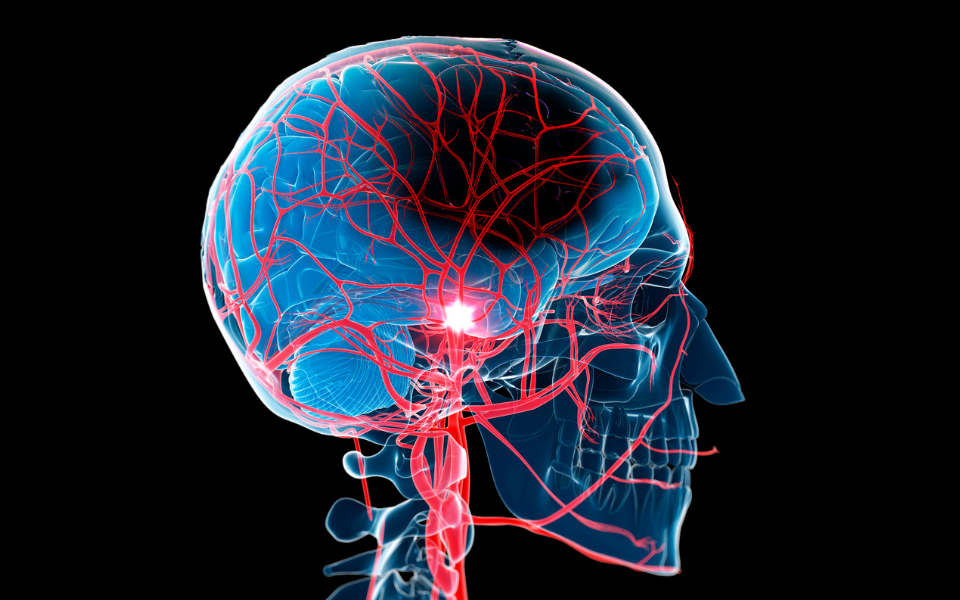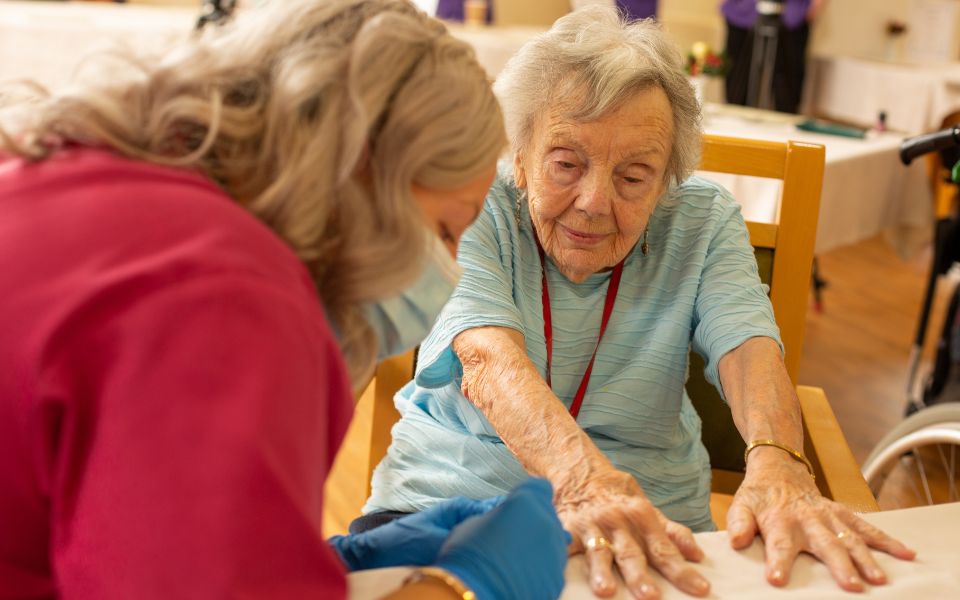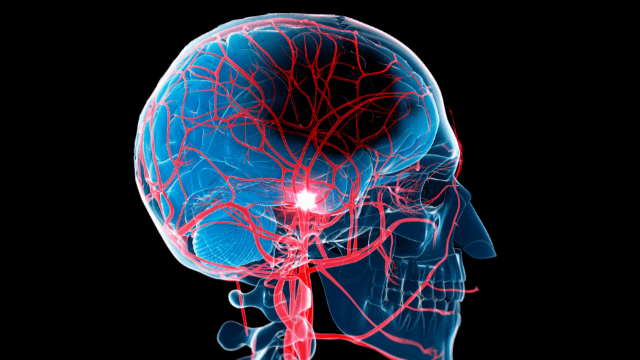World Stroke Day: Preventing a Stroke and Identifying the Symptoms
On World Stroke Day we wanted to highlight the importance of being able to recognise a stroke as well as discuss the ways we can lessen the likelihood of strokes occurring in the first place.
What is a stroke?
A stroke is when a portion of the brain is shut down due to a lack of oxygen and vital nutrients. Strokes can be caused by blood clots restricting blood flow to the brain or by blood vessels inside the skull that burst and bleed into the brain.

Explaining the different types of stroke
Ischaemic strokes are the most common and occur when a blood clot prevents the flow of blood to the brain. This kind of stroke can be caused by a condition called atrial fibrillation. This is where irregular heartbeat can cause blood clots in the heart that can then break up and become lodged in blood vessels that supply the brain.
Another cause of Ischaemic strokes is the narrowing of arteries, which can be natural with aging but can also be exasperated by:
Smoking
High blood pressure
Obesity
High cholesterol levels
Diabetes
Excessive alcohol intake
Although strokes can occur at any time there are ways in which you can help lessen their likelihood by sticking to the simple healthy practices mentioned above.
Haemorrhagic strokes are less common. These are often known as cerebral haemorrhages and happen when a blood vessel bursts inside the skull and floods into the brain. As high blood pressure is the most common cause of a haemorrhagic stroke, there are important steps to take to decrease the risk of high blood pressure such as:
Maintaining a healthy weight
Avoiding drinking excessive amounts of alcohol
Not smoking
Exercising regularly
Identifying the common signs and symptoms of a stroke

As well as the well-known FAST warning signs (face, arms, speech, time) of a stroke there are some other, more subtle signs to look out for which can include:
Severe headaches
Generalised weakness
Fatigue
Shortness of breath and chest pains
Nausea and vomiting
Brain fog
Hiccups
Alone, these symptoms could be shrugged off as general, much less serious health concerns but in combination serve as the early warning signs for a stroke. Spotting these and acting fast can save more of the person suffering the stroke and, if spotted early enough, could prevent lasting stroke damage.
Understanding the importance of responding immediately
The faster you react to the signs of a stroke, the better as earlier hospital treatment can minimise lasting damage to the brain. It’s important to know that a spreading stroke could affect different areas of the brain and if it spreads to the area that controls breathing, a stroke could be fatal. If medication can be delivered to a stroke patient within 60 minutes of the symptoms starting, the likelihood of them needing long-term care is vastly reduced.
There are five crucial steps to take after you have spotted the start of stroke symptoms.
Call 999 – even if you are unsure you are dealing with a stroke, your fast call could help prevent lasting neurological damage. Quick reaction time is essential.
Note the time symptoms began and whether the person has a severe headache – a headache could indicate a certain type of stroke.
Ensure you have the person's medical history to hand – this can be whether they’ve had a stroke before, if they have high blood pressure, have suffered a heart attack, have high blood pressure, diabetes, bleeding disorders, or liver disease.
Find out about medications – it would be helpful to attending paramedics to know of any medication that the person might be on especially ones that might react to the life-saving medication given to reduce blood clots in stroke patients.
Keep them talking – do your best to keep the person calm and talking, maintain their focus, and continue to ask questions they should know the answer to.
Living after a stroke and providing support
Following a stroke, there are many different ways in which the after-effects can be displayed in a person. They range from emotional and physical, to social and practical effects, some can be short-term whilst others can last for years or longer.
Here we will outline some of the ways in which you can provide care and support to help someone after they’ve suffered a stroke.
Emotional effects following a stroke include: Sadness, anxiety, and grief.
A person could experience any of these effects after suffering a stroke because of lasting physical damage to their brain or bodily functions. As health care providers you should be prepared to recognise and address any changes in mood or behaviour and take steps to ensure the person receives any relevant medication or mental health support required.
Grief is a complex emotion that can affect the body and mind differently in different people. It’s normal for a person who has suffered a stroke to go through the usual 5 stages of grief as they mourn their life before a stroke occurred.

As care providers, you can help by educating yourselves on the 5 stages of grief and support the person through.
Physical effects following a stroke include: Weakness, balance problems, and vision and communication changes.
The majority of stroke patients will suffer from a weakness on one side of their body known as hemiparesis which can affect the face, arm, leg, or a combination of all three. This can linger, but with the aid of physical and occupational therapy, any difficulties can often be overcome.
Often strokes can cause difficulties with swallowing (dysphagia) which can require special input from various medical professionals (SALT team). Support with eating and drinking may be needed and as care staff, we must be prepared to follow the correct procedures set out by governing healthcare bodies.

It’s common for people to feel dizzy or light-headed after a stroke. To combat this becoming a problem, advise the person to consider practicing balancing exercises such as yoga and seek the help of a physical therapist. Dizziness can also be a side effect of damaged vision which has occurred following a stroke. People can often experience double vision, jerking of the eyes, dry eyes, or loss of vision, some of which can be helped with prism lenses, prescription eyewear, and eye drops.
The last, most well-known, and impactful physical effect of a stroke is difficulties with speech and communication. The ability to form and understand words is often an effect of muscle weakness and damaged facial coordination or lasting damage to the brain. Speech therapists can help stroke patients by helping them cope with aphasia and as a care provider, patience and understanding is a key skill to support a person through their recovery process.
Social effects following a stroke include: the want, or ability, to resume normal social practices
Depending on the emotional and physical effects a person has suffered, socialising after a stroke can be physically difficult and mentally challenging. Luckily there are plenty of ways in which a person can access support and guidance to overcome both.
To help combat feelings of isolation, you can advise a person to join online support groups, if their effects are physical, to talk to others in the same situation as themselves. Alternatively, if the effects are not physical, there are plenty of support groups arranged by hospitals and local organisations where a person can meet and chat with others before attempting to get back to their regular social practices.
The practical effects of a stroke can include: varying difficulty with daily living tasks and loss of independence.
Aside from everything, even normal daily activities can prove a challenge for a person who has suffered a stroke. These can be exasperated by the effects we’ve already mentioned and, as a result, leave people feeling like they have lost their independence.

Daily tasks such as cooking, grooming, and housekeeping can prove difficult in the short or long term, and this is where experienced and understanding care can come into play. Whether this care and support is provided at home, or in sheltered or supported living facilities, it’s the duty of a carer to offer support to help manage these daily tasks whilst always providing encouragement to the person to try and complete them on their own. This can often be frustrating for the person but as carers, you know that patience, understanding, and consistency will be beneficial in the end.
As with any form of disability or disease, there are complex and varying effects a stroke sufferer can experience. The care we offer revolves around understanding these differences and knowing how to support and overcome them. At Nurseplus we train our staff to provide person-centered care that promotes independent living and helps people who have experienced a stroke, recover, and live life to the fullest.
To find out more about our care staff, or to learn about the different kinds of care services Nurseplus support, reach out to your local branch today and chat with our team.
Posted on October 29, 2023 by Nurseplus

